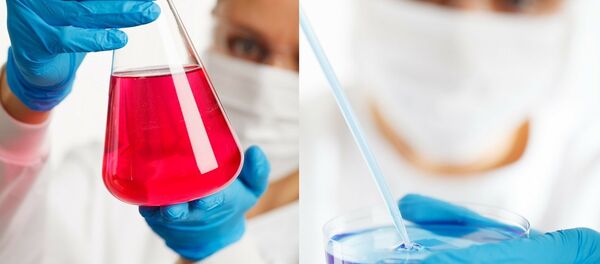Sputnik discussed the study with Dr. Susanne Pors, a scientist from the Laboratory of Reproductive Biology in Copenhagen, Denmark.
Sputnik: How complex is the whole procedure of growing ovarian follicles on the scaffold of ovarian tissue?
Susanne Pors: We are in a process where we, as you already know, can help a lot of the cancer patients by preserving their fertility. In the last 20 years we’ve done what we call ovarian tissue cryopreservation, that is when we take out the whole ovary and place it in liquid nitrogen and when the patient recovers and wants to conceive her own children we can put back this tissue again and then she can actually have her own baby. So this new method we’ve developed or are trying to develop anyway.
The artificial ovary is for a selected group of these patients because the patients with cancer inside of this tissue will have the risk of actually getting the cancer back when we transplant it. So it’s for leukemia patients or patients with ovarian cancer. So these are the ones we want to help with this new method.
Susanne Pors: That’s an interesting question because if we can actually construct this ovary we could make it for women who go into menopause very early. We know that some women have a family history, a genetic disposition for going very early into menopause and this could be a way to help these women as well.
So there’s wide application if we can manage to construct an ovary and I think it’s the insight into the biology of the human ovary. It’s quite unique so if we could gain more insight into how it actually functions that would be also quite a breakthrough for the science.
Sputnik: What exactly were you able to learn about growing this tissue and how soon do you think we’ll be able to see some kind of human trials?
Of course there’s a lot more work to be done and we need to do long-term studies where we can see they’re actually growing and maturing correctly so these eggs are sufficient enough to fertilize in the end.
I will, perhaps, say we are around 5 to 10 years from actually having a clinical application for this. So it’s the initial first step but nonetheless very important.
Sputnik: There’re certain patients with cancer that wouldn’t be eligible for this kind of procedure. Is there any way that in the future you’ll be able to screen out or filter out the cancer cells and just leave healthy tissue?
Susanne Pors: We actually do that in different ways. Now we already do what we call PCR where we look for specific pieces of the DNA if it’s present which are markers for this tumors; and we can also assess the tissue under a microscope to see if there should be any cells in it.
But these methods have flaws so it would be nicer to see new options for this specific patient group (who have diseases) such as leukemia and ovarian cancer, so we can offer them a totally no risk regaining of their fertility.
Sputnik: Hoe accessible is this going to be in terms of cost? Because that’s also going to be a very important factor. I can imagine that in these very early stages everything’s very costly because it is new technology and it’s done on a very small scale but potentially would this be something that most people would be able to access?
So we can use them from herself and actually the scaffold isn’t the most expensive thing because it’s a very low-cost procedure. It won’t be that costly but of course we’ll have some surgery and operation and some specialized training for people doing it, but it won’t be enormously (expensive).
Sputnik: Currently what are the chances that people will be able to conceive after cancer treatment?
Susanne Pors: Giving them this option of ovarian tissue cryopreservation we actually have now 20 years’ experience in this and we have over a hundred babies born worldwide from these women.
So we’re still in early days but we’re actually seeing more and more results which are very promising. It’s getting better than it was just 10 years ago.
The views and opinions expressed in this article are those of Dr. Susanne Pors and do not necessarily reflect Sputnik's position.




